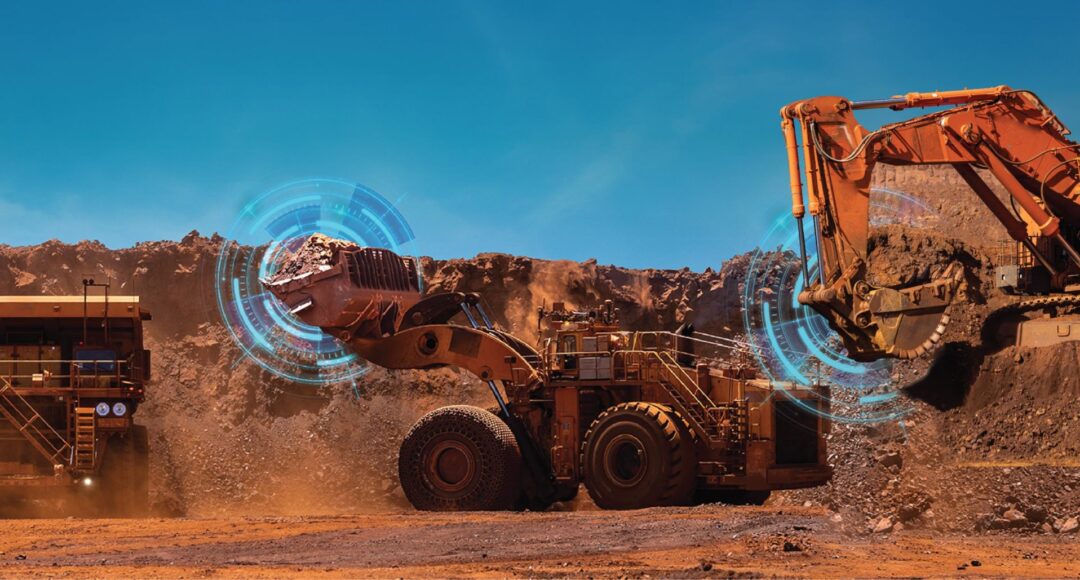Advanced solutions to unlock productivity, enhance safety, reduce maintenance, and lower emissions.
With over 40 years in the mining industry, CR Powered by Epiroc understands the challenges of the modern mine, like the pressures of hitting ambitious Net Zero goals while still being tasked with increasing payloads and minimizing costs.
We make the most advanced physical and digital solutions for the world’s best miners to unlock productivity, enhance safety, reduce maintenance requirements, and lower emissions.
Move More Dirt in Less Time
Backed by an uncompromising design process, data-based testing protocol, and passionate engineers, our mining equipment and technology are built so you can mine smarter.
CR’s Stingray cast lips are engineered to reduce lip weight, improving digging performance and reducing dig energy by 13% compared to the market standard. This makes the Stingray prolifically productive without compromising on strength. Add on our GET, which are optimized for any digging conditions. We use scale testing and advanced computer models to validate our designs for unrivaled productivity and wear life.
Once your bucket’s lip is optimized, it’s time to increase payloads. Titan 3330 is a digger-based payload management system that provides real-time guidance to operators so they can consistently fill buckets and trucks to target payloads. With continuous feedback, you can create a loop of continuous improvement for your operators in the pursuit of filling trucks ever faster and more accurately.
Lastly, we help you track lost and broken GET. Digging after losing GET exposes your lip and bucket to premature wear and damage and decreases digging performance. GET Trakka alerts operators to lost GET so they can immediately stop digging, avoiding unnecessary damage to the lip system and minimizing unplanned maintenance. Operators can then use the portable scanner to find the lost tooth before it enters the crusher.
The Productivity Challenge
Energy consumption and intensity in mining and mineral processing is rising at around 6% each year (Deloitte), largely due to the declining grade of ore bodies and the rising amount of waste that must be removed to access them.
With more demand for minerals than ever before, miners are tasked with moving more dirt while minimizing costs and being more productive in the process.
Our Stingray cast lips have a slimline lip profile, allowing material to flow with less resistance, so buckets can penetrate dirt with less effort. Casting the lips enables us to reduce the weight of the lip, so buckets can take on increased payloads, making your mining operations more efficient.
Optimized payloads have a big payoff. Even a minor increase in payloads adds up to hundreds of additional tonnes on mining class machines. By using Titan 3330 payload management, miners have seen more trucks loaded to target payload and increased productivity by moving more tonnes with the same number of trucks.
Lost teeth and GET can have an outsized impact on operations. By being quickly alerted to lost GET and then finding lost components with the scanner, workers spend less time searching for lost GET, with less material quarantined to be searched, reduced equipment damage, and, most importantly, no crusher down time.
Let’s Talk Maintenance
Unplanned downtime is expensive, from additional costs to lost productivity, not to mention the additional staff required to maintain equipment.
At CR, we use data and smarter engineering to give you control over your mining asset maintenance.
The smooth transitions in the Stingray lip’s design distribute stress evenly and avoid heat-affected zones, which can crack under pressure, reducing maintenance requirements. Adapters are integrated into the lip, so you need fewer components, streamlining maintenance and ordering.
Titan 3330 can minimize machine duty by providing pass-by-pass feedback to operators on machine duty and wear, so they can change their approach in real-time. For one miner in Pilbara, Titan delivered a 42% decrease in machine duty in the first 300 days, effectively doubling the maintenance interval for excavators.
Miners can also use the data from the embedded GET Trakka sensors to gain unique insights into their GET and bucket usage. The reports on individual loss events include loss times and locations, giving you a greater understanding of why GET was lost or broken. The data around GET usage and component reliability can assist in predicting change out times, making maintenance schedules more efficient.
How Does This Help with Emissions?
Now is the time for miners to take action to implement methods for decarbonizing. With the mining industry contributing 2 to 3 percent of global CO2e emissions (McKinsey), we have an essential role in reducing emissions.
Miners need to focus on improving their mining value chain with technology that exists today as part of their approach to lowering their carbon emissions. CR has engineered smart solutions that can help miners reduce energy requirements at multiple points in the value chain while also improving productivity.
Thanks to its design, engineered to reduce lip weight, the Stingray cast lip provides improved digging performance by reducing dig energy up to 13% compared to alternative lip systems. By digging more efficiently, excavators burn less fuel, reducing CO2e emissions by up to 38 kg CO2e/hr, adding up to a savings of 217 tonnes of CO2e annually, depending on mining conditions.
Titan 3330 has been shown to reduce payload variability, tighten spreads, and increase average truck payloads without increasing overloads. By minimizing the number of load haul circuits completed per tonne of ore mined, Titan reduces CO2e emissions from haul trucks.
For one miner, Titan 3330 increased median truck fleet payload from 227 to 239 tonnes, reducing diesel L/t by 0.8%. The same fleet moved over 10 million additional tonnes in a year. That’s the equivalent of a 1.3 million liter diesel saving, equal to 3,500 tonnes CO2e / year.
Solutions for Today’s Mining Challenges
We are conscious of the significant global energy consumption of the mining industry and actively working to reduce the impact through products that can positively impact energy requirements wherever possible.
Read the full article originally published by Mining Magazine.
